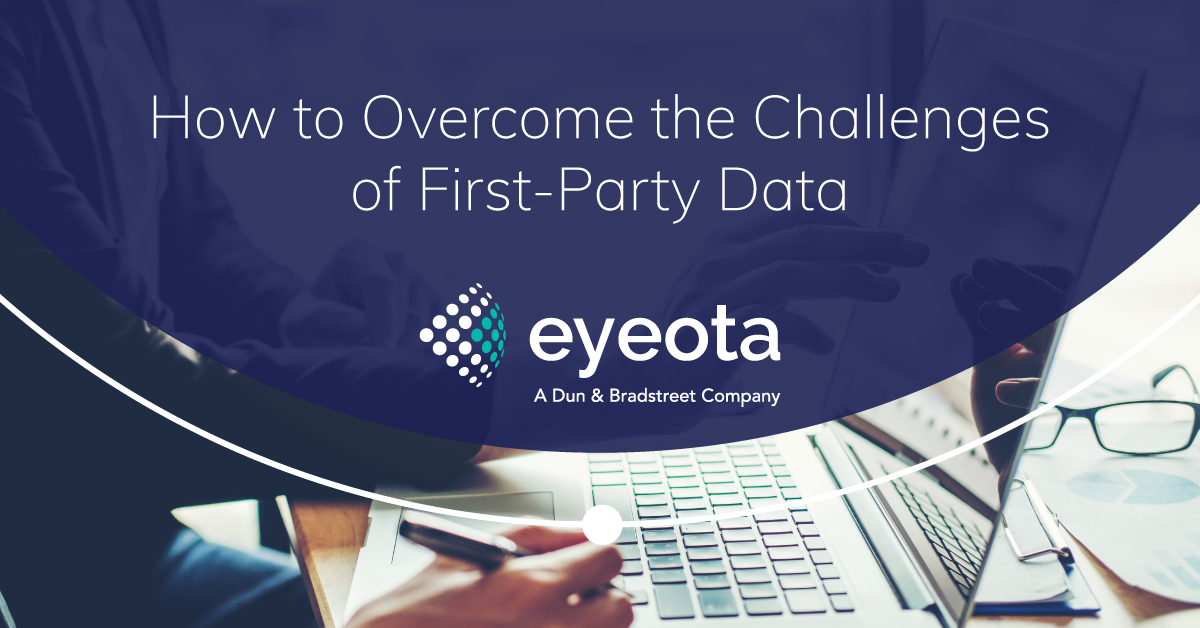The rise and success of the digital era have brought an abundance of opportunities for businesses, including unprecedented global reach and scale, and the ability to reach potential customers directly. While this has opened up a world of possibilities, it's also made marketing even more complex.
In an increasingly competitive business environment, marketers have to move with speed and agility. In order to stay ahead of the game, they need consumer data that is up-to-date, accurate and actionable. But how can marketers achieve this when their first-party data sources are incomplete or inaccurate?
They can't — and that's where third-party data comes in as a solution. Let’s dive into it.
The Opportunity: The Proliferation of Data
As consumer behavior shifts to favor digital and mobile channels as opposed to traditional brick-and-mortar stores, brands are aware that the customer journey has evolved. From researching products to engaging with brands, consumers are relying on the internet to make purchase decisions.
Savvy marketers know their strategies must evolve as well. The good news is that this shift has made the internet a virtual treasure trove of data. It's a wonderful thing, but there's so much of it, and marketers often struggle to connect the dots and find the right data points to inform their strategies.
The Challenges: The Current State of Data
The current state of data is that it's incredibly fragmented. The internet is a vast, sprawling place with many different channels. Each channel has its own ecosystem and set of rules that govern what data can be collected from them — and marketers are left to pick up the pieces, trying to piece together a cohesive picture of their audiences.
Unfortunately, this approach often leads to data that's either too broad or too narrow to be actionable.
1. Google's removal of third-party cookies
Google's decision to remove third-party cookies from its browser by 2024 will make it more difficult for marketers to track user behavior across the internet.
This move is part of Google's effort to create a less intrusive browsing experience for users, but marketers are concerned about the impact the removal will have on collecting user data and, most importantly, how it will affect their ability to target audiences with relevant, personalized ads.
2. Apple's changes to its Identifier for Advertisers (IDFA)
In a recent update to its privacy guidelines, Apple has made changes to its Identifier For Advertisers (IDFA). Now, users must opt-in before being tracked, resulting in a decreased number of data points and devices that advertisers can collect information from.
The change is intended to give users more control over how their data is used, but most brands are focusing their marketing efforts on new, creative ways to target end-users with tailored campaigns that are not dependent on the IDFA.
3. Changing data privacy laws
Global legislation around data privacy is in a constant state of change, with debates about consent and user protection.
Marketers are challenged to find a viable, long-term solution that is resilient to these changes. Otherwise, businesses risk being caught off-guard and unprepared to adapt their marketing strategies accordingly.
The Solution: The Enrichment of Data
Even in a cookieless, privacy-first world, third-party data is the solution to rounding out marketing strategies. While first-party data is a great starting point for marketers, it's simply not enough to build an effective campaign.
To successfully navigate the new landscape, marketers need to have specific data about their customers, beyond basic demographics. Data enrichment is the process of collecting and combining different data sources to create a more robust, accurate picture of an audience's wants, needs and behaviors.
By enriching first-party data with third-party insights, marketers can better understand who their customers are and how they interact with the brand — allowing for new roads to personalization and prospecting.
Bridging the Gap With Eyeota
Eyeota Enrich augments brands’ first-party data with qualified consumer traits and personas to transform loyalty and retention programs, optimize acquisition strategies, and enhance digital marketing campaign performance.
By gaining deeper insights into their audience, brands are able to bridge the gap between their marketing strategy and the individual customer, allowing for more personalized engagement on digital display, video and mobile channels.
Whereas first-party data gives you a high-level view of your audience, Eyeota Enrich provides audience profiles that are classified by the customers’ specific path to purchase.
Ready to get started? Download our guide or connect directly with an Audience Specialist to find out more.
